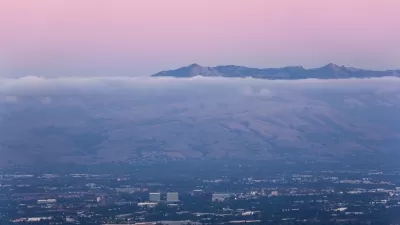Brad Plumer discusses the findings of a new report from the McKinsey Global Institute that delves into the impact that U.S. cities have on the national and global economy, and assesses the reasons for their influence.
Plumer expands on one of the key findings of the new McKinsey report, which found that, "the United States appears to be wealthier than Europe because it has a greater share of its population living in large, productive cities." This finding is based on data in the report that shows, "Roughly 83 percent of America's GDP came from its 'large cities,' defined as cities with a population of 150,000 or more. By contrast, China got 78 percent of its GDP from large cities and Western Europe got a surprisingly small 65 percent of its GDP from its large urban areas."
An article by Yuval Rosenberg in The Fiscal Times investigates one of the report's other key findings, that "Large U.S. cities are expected to generate more than 10 percent of global GDP growth in the next 15 years, a larger contribution than all of the large cities of other developed countries combined." The report attributes that advantage to America's second tier cities, rather than New York or Los Angeles, which "have economic and size advantages over the second tier of European cities."
"The U.S. has a broad base of cities such as Boston, Chicago, Washington, D.C., and San Francisco that are very large and important cities and contribute much more than their counterparts – let's say No. 3 to No. 30 in Western Europe," says Jaana Remes, a senior fellow at the McKinsey Global Institute and co-author of the new report. "It's the strength of the middleweight cities across the U.S. that really is the differentiator."
FULL STORY: Why is the U.S. wealthier than Europe? Give credit to its cities.

Alabama: Trump Terminates Settlements for Black Communities Harmed By Raw Sewage
Trump deemed the landmark civil rights agreement “illegal DEI and environmental justice policy.”

Study: Maui’s Plan to Convert Vacation Rentals to Long-Term Housing Could Cause Nearly $1 Billion Economic Loss
The plan would reduce visitor accommodation by 25% resulting in 1,900 jobs lost.

Planetizen Federal Action Tracker
A weekly monitor of how Trump’s orders and actions are impacting planners and planning in America.

Wind Energy on the Rise Despite Federal Policy Reversal
The Trump administration is revoking federal support for renewable energy, but demand for new projects continues unabated.

Passengers Flock to Caltrain After Electrification
The new electric trains are running faster and more reliably, leading to strong ridership growth on the Bay Area rail system.

Texas Churches Rally Behind ‘Yes in God’s Back Yard’ Legislation
Religious leaders want the state to reduce zoning regulations to streamline leasing church-owned land to housing developers.
Urban Design for Planners 1: Software Tools
This six-course series explores essential urban design concepts using open source software and equips planners with the tools they need to participate fully in the urban design process.
Planning for Universal Design
Learn the tools for implementing Universal Design in planning regulations.
Caltrans
Smith Gee Studio
Institute for Housing and Urban Development Studies (IHS)
City of Grandview
Harvard GSD Executive Education
Toledo-Lucas County Plan Commissions
Salt Lake City
NYU Wagner Graduate School of Public Service





























